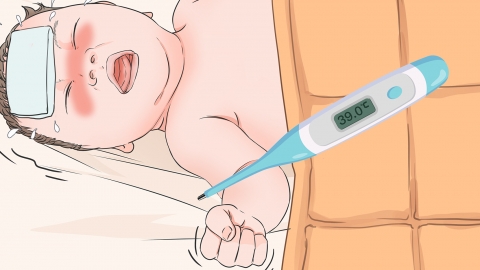How to Determine if a Child Has a Fever Caused by Food Accumulation
Febrile illness refers to fever. To determine whether a child's fever is caused by food accumulation, a comprehensive assessment can generally be made by observing symptoms such as decreased appetite, abdominal distension and bad breath, abnormal bowel movements, disturbed sleep, and thick greasy tongue coating. Detailed analysis is as follows:

1. Decreased appetite: After food accumulation, the gastrointestinal digestive function weakens, and children will clearly show disinterest in eating, refusal to eat, and even show no interest in foods they usually like, with a significant reduction in food intake compared to usual.
2. Abdominal distension and bad breath: Accumulated food in the gastrointestinal tract ferments and causes abdominal bloating. The abdomen feels hard upon touch. At the same time, the breath may emit a sour or foul odor, and symptoms of bad breath are more noticeable upon waking in the morning.
3. Abnormal bowel movements: Food accumulation can affect intestinal motility, potentially causing constipation with dry, hard stools and difficulty defecating, where the feces are dry and hard with a sour or foul smell. Alternatively, it may manifest as diarrhea with loose, watery stools mixed with undigested food residue, also accompanied by a sour and foul odor.
4. Disturbed sleep: Discomfort caused by abdominal distension due to food accumulation can disrupt sleep. Children may toss and turn, cry, or become restless during sleep. Some may sleep face down, grind their teeth, or kick off their blankets, with a noticeable decline in sleep quality.
5. Thick greasy tongue coating: Normally, the tongue coating is thin and white. During food accumulation accompanied by fever, the tongue coating becomes thick, presenting as white or yellowish greasy coating. The tongue surface appears sticky and not fresh. Some children may also show symptoms such as red lips and warm palms and soles.
If a child exhibits multiple symptoms mentioned above along with fever, food accumulation with fever may be initially suspected. At this time, dietary adjustments should be made, providing light and easily digestible food while reducing food intake. If the fever persists, abdominal distension is significant, or vomiting occurs, prompt medical consultation is necessary for accurate diagnosis and to avoid delayed treatment.




